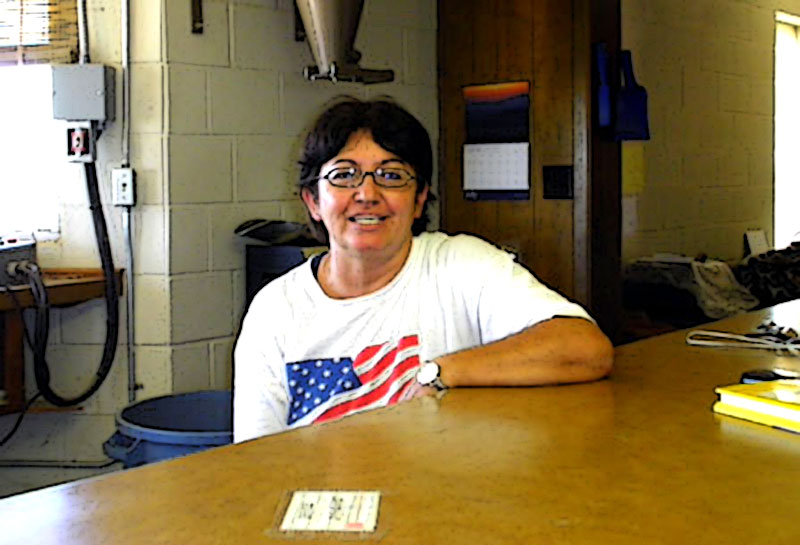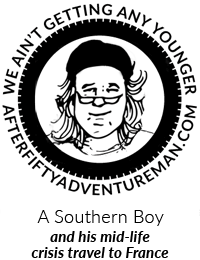July 13, 2015
Leaving Dalhart, Texas
As I depart Dalhart on this brilliant morning, GoogleMaps reports I am a mere two-hundred nine miles from Taos, New Mexico. The trip is almost over, and yet there is much more to discover. As I move closer to my final destination, the lens through which I view this world becomes more focused. Everything is sharper. People, places, and events stand out. Even the colors of the landscape have taken on a more vibrant hue. The miles tick away beneath my wheels, and my tour across America just keeps getting better.
About fifteen miles out of Dalhart, I crest a small rise and spy a grain silo down the road. I pedal towards the small office next to the silo’s truck scales and pull onto the scale. A friendly woman with thick, black hair and Hispanic features pokes her head through the drive-up window. She surveys the Surly and B.O.B. bike trailer and exclaims, “That is the smallest load of corn I have seen all day!” With a brilliant smile, she invites me inside, informing me that her swamp cooler is on the fritz, but I am welcome to cool down for as long as I like. She introduces herself—her name is Bell—and offers me a bottle of ice water and a Snickers bar. With the temperature outside nearing 100 degrees, the grain-silo refuge is a small slice of heaven.
It turns out that Bell used to be a truck driver, herself, hauling wheat and corn from farms to regional silos. Then she acquired the job manning the weigh station and has been here for seven years. “This is the best job I have ever had,” Bell shouts with a toothy smile. She just loves the rhythm of her days, she says. When crops are coming in, the pace is hectic, but that affords her the opportunity to socialize with other drivers, and when her duties are less demanding, she catches up on her reading. Intrigued with my journey, Bell peppers me with questions about my route and how people have treated me—and airs her concerns that a “crazy-ass driver” on a cell phone will inadvertently mow me down. After I satisfy her sense of wonder about my journey, Bell tells me about her three sons, “who are mostly out of trouble,” now that they have entered their twenties, and about her life in the panhandle of Texas.
And, in more detail than I ever dreamed possible, about the operation of the grain silos. The silo she manages holds 960 thousand bushels of corn and, in her words, is a “smallish facility.” The corn I’ve been pedaling through for the past ten miles is grown almost entirely for cattle feed, Bell informs me. Then she cautions me to be on the lookout for rattlesnakes, while I’m pedaling. She often finds them curled up on the stoop outside her office door, and they have “scared the shit out of her” on numerous occasions. The temperature is near my boiling point, and, rattlesnake or not, I feel some sympathy for these poor creatures. The snakes, like me, are simply trying to find a cool place to rest.
As we visit, Bell recounts her life and inquires into mine in a way that treats us both with respect and serves to uphold the mysterious beauty of people living ordinary lives. I could sit and talk about life with her all afternoon, but there is pedaling to be done, and the Surly and I are anxious to make it to New Mexico. Bell stands rock solid on the stoop behind her office and waves to me as I take a few parting photos of her and the silo, wave back one last time, and then head west towards the state line.
The memory of my encounter with Bell—another of the many caring, giving, friendly souls that have dotted my path since I left St. Augustine—lingers long after I depart the comfort of her weigh-station office. As I ride the highway shoulder past open grasslands and the occasional herd of cows, I am struck by the sense that, each day on the Surly, I accomplish more—in a wonderfully satisfying way—than I have ever done in my struggle as a small businessman.
Although I’ve tried to approach my business dealings with integrity and live by the philosophy of giving back to others, in my new role of cyclist, I no longer feel as if I am moving through quicksand as I attempt to navigate daily life. Atop the Surly, traveling the byways of America, I am free to reach out in an honest way to other people. While it was never my intention to assume the identity of an emissary, during this trip, it seems that is just what I have become. I’ve learned it’s a part all travelers assume: the idea of home is the currency we share with those whom we encounter during our travels.
In one of our longer phone conversations during the course of this trip, my good friend Bob Homme said, “We are simply tribal people. In a simple way, Hugh, you are a representative of your tribe, telling of life in North Florida, sharing stories of the food you eat, the things you like to do, the nature of your surroundings, and the personalities in your sphere.”
Bob is right: America is a collection of tribal clusters of human beings. I have never thought of our country in this way, but my journey continues to prove his theory. As I move slowly from St. Augustine towards Taos, for the first time, I notice the subtle differences between our worlds. But I also celebrate the ties that bind us. As I get closer to the border of New Mexico, I sincerely hope I have represented my people well, and that those wonderful souls who have befriended me along my route will include me in their stories, as I will share them with my friends, members of my tribe, when I finally return to St. Augustine.
We Americans may identify ourselves by city, state, or nation, but when we gather with those who are closest to us, around a metaphoric fire, we share stories of what and who we encounter during our daily journeys. This understanding helps close the long distance between myself and home. The daily succession of conversations and recollections I have experienced since departing on May 21st draws an unbroken line across those 1700 miles. Tugging gently on it, I can feel the ripple of human interaction, warmth, and closeness reverberate all the way back to St. Augustine.













Leave a reply